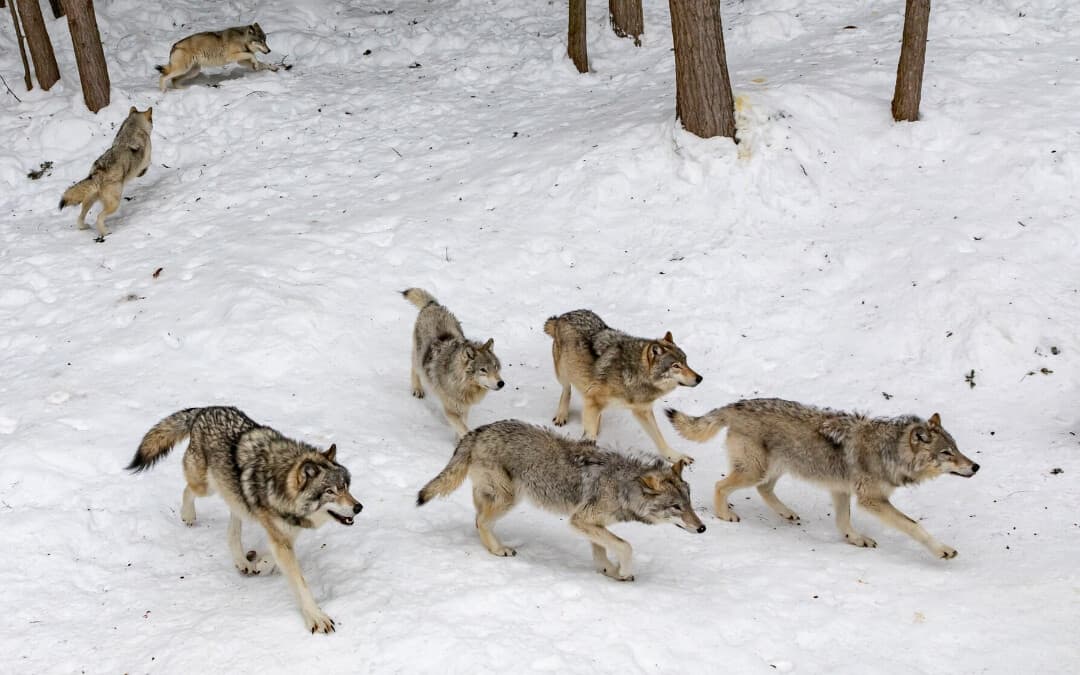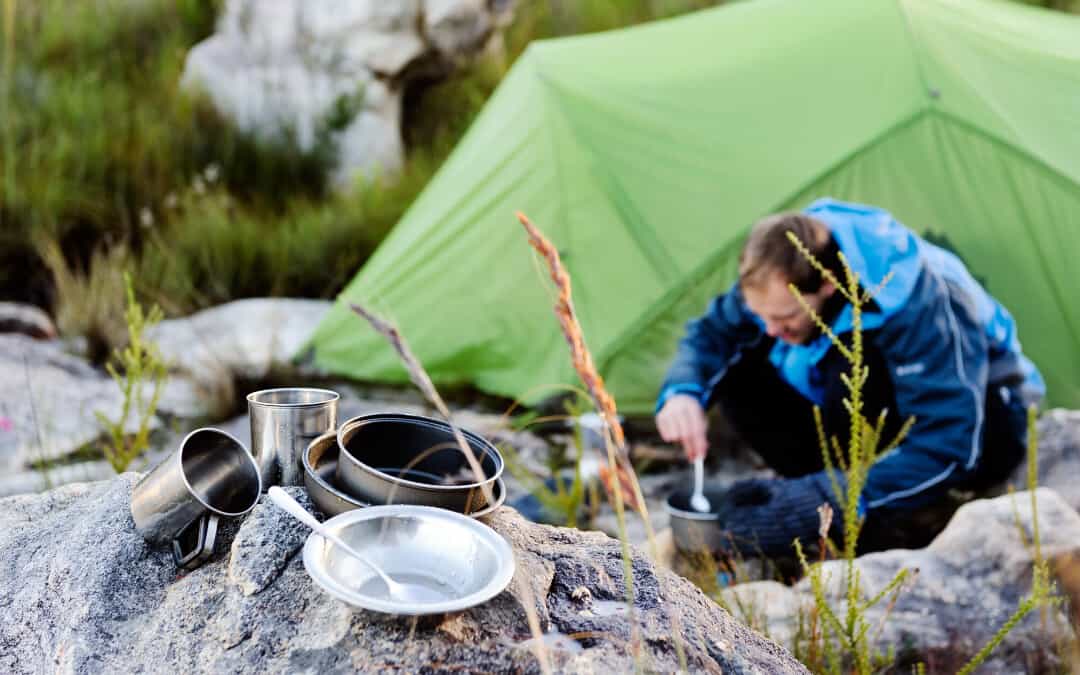Wolves aren’t any more dangerous than other large animals like bears or moose, but they are still wild animals with sharp teeth. Wolves are rarely seen in the wild, and when they do appear, they often run away. In fact, only about two people in North America are killed by wolves each year. But when these rare attacks do occur, they are often fatal. If you are hiking in a region where wolves live, here are some tips that might help you avoid an attack.
How to Avoid a Wolf Attack
The same precautions you take when hiking in bear country, such as carrying bear spray, will also help you avoid a wolf attack. Many wolves are naturally afraid of humans, especially if they are trapped in a small space with us. Remember, a wolf can smell your human scent from up to a mile away. Also, if you have the time, leave some trail mix on the trail to entice the wolf away from you. There are three types of wolf attacks: either a scavenger attack, an ambush attack, or a pursuit attack. The most dangerous type of attack is the ambush attack, because it’s hard for you to escape. In an ambush attack, a wolf will rush towards you and attack at a close distance. If you don’t panic and run away, your odds of survival are significantly greater.
What to do if You Encounter a Wolf
You are probably not going to die in a wolf attack. Even the biggest of wolves are no match for most people. A predator might win a fight, but not without heavy casualties. Don’t run from a wolf or try to outsmart it. The best defense is simply to stay calm and walk calmly and slowly away. By repeating this simple phrase, “I’m not afraid of you,†or “I’m not afraid of you, I’m not afraid of you,†if a wolf attacks, the wolf will likely decide to back off. Keep in mind that the first line of defense against a wolf attack is to make yourself bigger and louder. If you scare a wolf, it may attack to protect itself. Of course, if a wolf attacks you, it is likely to attack and tear you to shreds. If a wolf attacks you, there’s no way to stop it. Your only option is to fight back.
What to do if a Wolf Approaches You
If a wolf shows up within 200 yards (180 meters), try to make yourself look big, wave your arms, and shout loudly. Never run away from a wolf. Many people run or attempt to climb a tree, but this is usually foolish because running will only provoke the wolf to chase you further. Don’t try to get a better look at the wolf. This may cause the wolf to approach more aggressively. Instead, do not run; stay still, and just try to look as large as possible. Make loud noises. Talk loudly or blow a whistle to frighten the wolf away. If a wolf shows no signs of stopping, then take one small step in the direction of the wolf. If the wolf doesn’t retreat, run at a quick pace. If a wolf follows you, slowly turn around and walk backwards towards where you came from. Do not turn around.
What to do if a Wolf Follows You
If you do happen to come across a wolf pack, here are some steps to follow if the pack follows you. 1. Ignore the Wolf Pack If the pack’s behavior is normal, and you think the animals are probably going to keep their distance anyway, ignore the wolves. Unless you are headed directly for the pack, keep moving slowly and carefully. 2. Stop, Back up, and Stand Still If you do encounter a pack of wolves, slow down to a walk and immediately stop. Don’t run, and don’t crouch down, as the wolves may want to go after your body. You should also stand still as you avoid movement. Don’t crouch down, and don’t move until the wolves move away. 3. Return to the Group If the pack doesn’t back off and you are getting harassed by the animals, return to your group.
What to do if a Wolf Gets in Your Camp
First, know that wolves are more likely to attack people who are less prepared than their attackers. They often follow prey animals to their retreats, and follow them to food sources to feed. This is why wolves are not normally aggressive to people, though there is one rare report of a wolf killing a person that was later proven to have been wrongly identified. If you spot a wolf on the trail, wait to see if it moves on, but if it doesn’t, move quickly and back away, staying in an open area away from the wolf and as far from the predator as possible. If the wolf turns towards you, defend yourself with sticks and rocks. You can use a sling shot to try to distract the wolf, but wolves rarely attack when you are shooting at them with a gun.
What to do if a Wolf Charges You
First of all, it’s important to know the difference between a wounded or abandoned wolf and a healthy wild wolf. Wolves rarely attack humans and they are usually very wary around humans. If a wolf does charge, try to appear as big and scary as possible. This is important to remember if you are attacked or simply startled by a charging wolf. If you are attacked, fight back. If you do find a young wolf at your campsite, do not approach it. Wolves are quick to run if they see a predator. One coyote can reach speeds up to 45 mph when they chase prey, and wolves can move much faster than that. You may also want to use pepper spray.
What to do if a Wolf Grabs or Bites You
1. Get away. If a wolf tries to attack you, you should immediately get away. Stay at least 50 yards away from the animal. If the wolf continues to approach, you should make yourself look larger by raising your arms and pointing at the animal. Scream, clap your hands, stomp your feet, or kick and scream. Start waving your arms and make noise to scare the wolf away. Try to remove the animal from the area. If the animal is not frightened, or if the animal is charging, throw rocks, sticks, or other objects at the animal. If you are not around large rocks, try to pick up small children or small objects to throw. 2. Wait for it to leave. If the wolf continues to approach you, do not try to run. Wolf attacks are not often fatal, but they are still deadly.




0 Comments